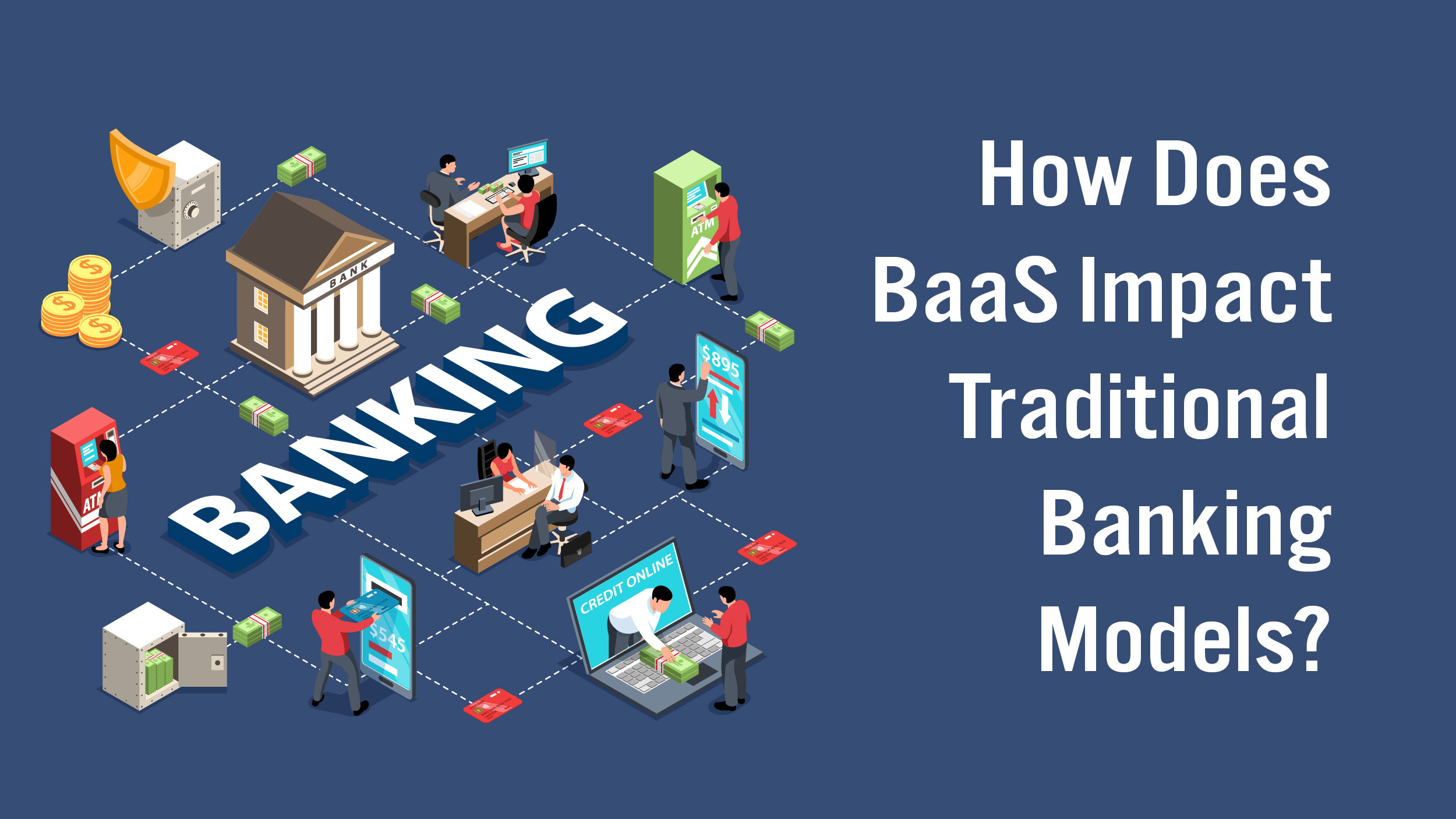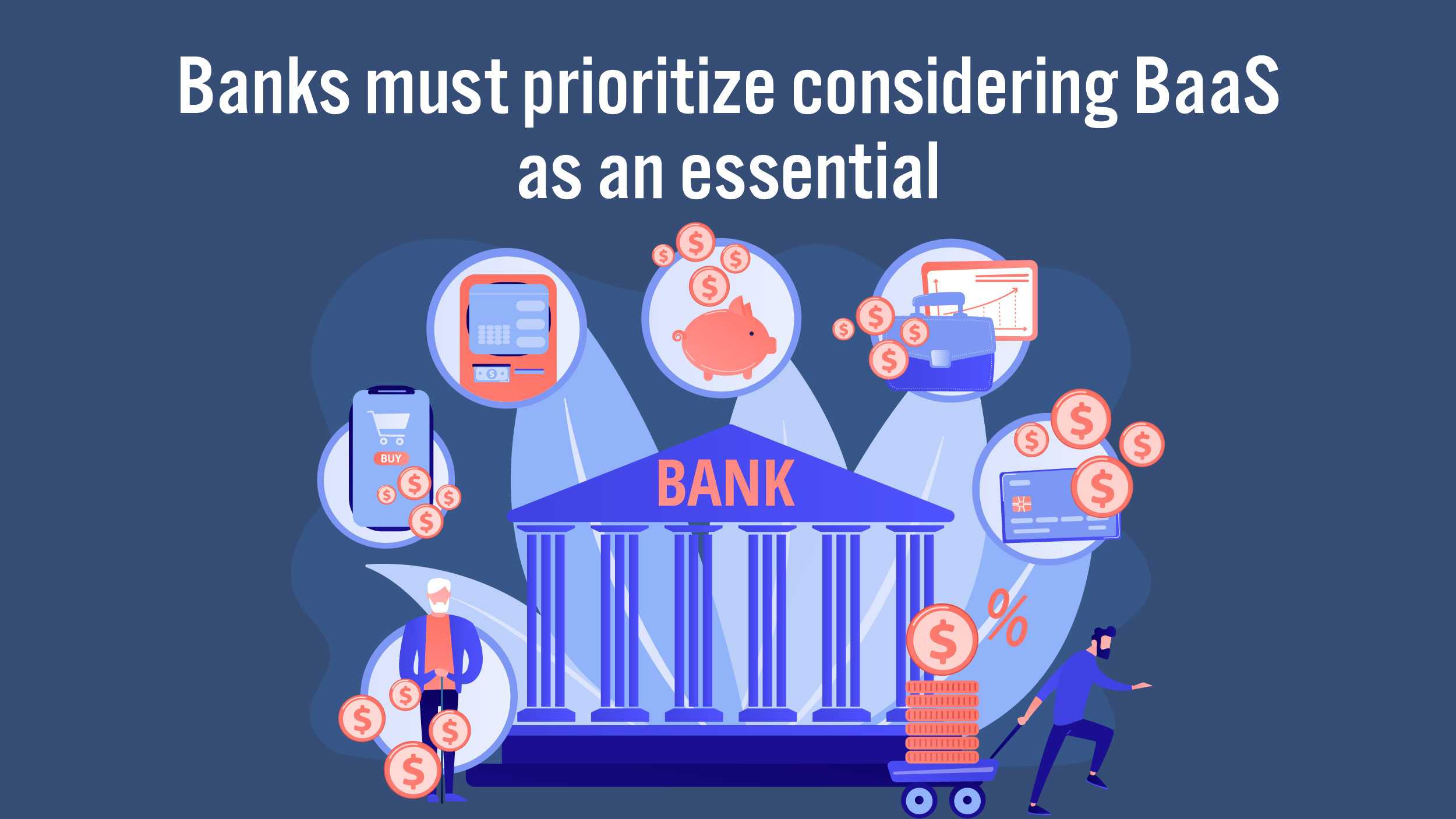As the financial industry continues to undergo rapid transformation, NBFCs are turning to BaaS as a strategic solution to enhance their services, streamline operations, and drive innovation. In this article, we will delve into the various advantages of BaaS for NBFCs, from increased agility and cost-efficiency to expanded product offerings and improved customer experience. This blog delves into everything you need to know about banking as a service. So, let’s get started!
What is Banking as a Service?
The provision of banking products and services via third-party distributors is known as Banking as a Service (BaaS). BaaS products enable innovative, specialized offers and bring them to market faster by combining non-banking financial companies with regulated banking systems. BaaS offerings are fast gaining momentum as there is a growing malaise in consumers regarding the current banking solutions.
Banking as a Service platform has emerged as a fundamental component of open banking in financial services, in which companies provide additional financial transparency alternatives for account holders by providing their Application Programming Interfaces (APIs) to third-party providers (TPP) to develop new services.
How Does BaaS Impact Traditional Banking Models?

According to McKinsey & Company, there are six important trends in Banking as a Service and embedded finance that banks should expect. Here are the trends:
Customers now want convenient access to multiple banking services in one place.
Emerging FinTech companies need to partner with banks to offer a wide range of financial services, such as bank accounts, payment processing, and lending opportunities. This collaboration, known as Banking as a Service, helps them provide comprehensive solutions to their customers.
Open banking and PSD2 are encouraging the development of banking APIs and universal accessibility in response to regulations. To adapt to these requirements and align with the evolving industry, banks must update their IT systems. Embracing BaaS models can offer the financial resources needed to cover the costs of these modernization initiatives.
Banks are expected to face a decrease in revenue and profitability. To counter this, they need to explore new sources of income and broaden their range of products. the most promising options are those with scalable business models.
Banks can expand their BaaS capabilities and offer embedded finance solutions to businesses as digitization and automation advance.
Traditional banks no longer have the trust advantage over FinTech companies due to the rise of trusted brands offering financial services. Banks can benefit from this by collaborating or partnering with these trusted brands to offer co-branded or white-labeled financial services.
Working of a Banking-as-a-Service Model
Allowing licensed banks to enable businesses to integrate digital banking and payment services totally into their products is the primary function of Banking-as-a-Service. Fintech, digital banks, or other TPP paying a fee to access a BaaS platform is all the BaaS model is about. In short, Financial institutions make their APIs available to third-party providers and then give them access to systems and data required for developing new banking products or providing white-label banking services.
Legacy institutions that create their own BaaS systems offer up new revenue streams in addition to gaining ahead in open banking. Charging clients a monthly charge for access to the BaaS platform or charging a la carte for each service utilized are the two main monetization options for BaaS. Banking-as-a-Service involves three important players which are, the Bank, the BaaS platform, and fintech and non-fintech companies interested in embedding fintech services directly into their products.
Banks must prioritize considering BaaS as an essential

It’s crucial for banks to take into account BaaS as a vital component of their operations. When considering the increasing popularity of embedded finance, some banks may worry that offering BaaS could harm their client relationships. However, it is important for them to weigh the potential benefits of BaaS. By working with partners to provide financial products through BaaS, banks can generate high-volume business with lower margins. Thus, it is crucial for banks to consider this option when deciding how to move forward.
During the 1990s, opening up the telecom sector was comparable to the process of deregulation. At first, telecom service providers were hesitant to share their infrastructures with third-party providers. Nevertheless, the deregulation facilitated the creation of new business models, which led to higher demand and profit opportunities for telecom companies.
Is BaaS similar to Open Banking?
No, open banking involves banks connecting to non-banks via API, hence the two models are frequently confused but they are not similar. The BaaS model, on the other hand, serves fundamentally different objectives. Non-banking financial companies integrate entire banking services into their products in BaaS models. Non-bank entities, on the other hand, use the bank’s data for their products in open banking models. These non-bank businesses are known as third-party service providers in the industry.
In the years to come, BaaS will bring together digital technology platforms and financial institutions to reshape economies. This will allow financial institutions especially the NBFCs to achieve new revenue growth at a reasonable cost.
Winding Up
Banking as a Service offers numerous benefits for NBFCs. It provides agility, cost-efficiency, and scalability. With BaaS, NBFCs can expand product offerings, use advanced technology, and enhance the customer experience. As we’ve explored in this article, the transformative power of BaaS for NBFCs cannot be underestimated. BaaS helps NBFCs stay competitive, collaborate with fintech partners, and unlock new opportunities for growth in the financial industry. The future of NBFCs relies on harnessing BaaS’s potential.




